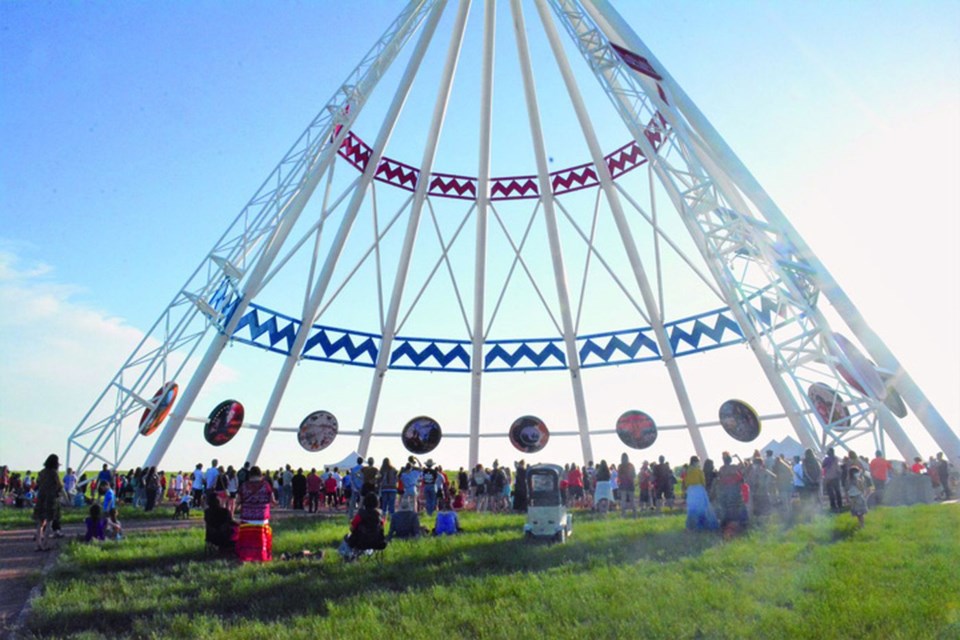Medicine Hat - Hatters turned out in the hundreds to the Saamis Tepee Thursday evening to pay tribute to the young lives lost to residential schools, to remember the inter-generational pain they caused and to express hope for reconciliation in the future.
People of all ages – Indigenous and non-indigenous alike – prayed, spoke their truth and wept as drummers drummed next to the 215 pairs of children’s shoes which filled the inner circle of the Tepee. Shoes representing the number of children believed to be buried on the grounds of a former residential school in Kamloops.
One of those who travelled to the city and witnessed the vigil was Patsy Buffalo Calf, resident of the Nekaneet First Nation and survivor of the Lebret Indian Industrial Residential School.
“Abuse,” Buffalo Calf said is her memory of the Saskatchewan school. “All kinds – verbal, physical … I’m just now trying to deal with this stuff.”
But vigils like Thursday’s that give the ability for people to share those experiences is bringing awareness to what she called the dark part of the Indigenous experience in Canada.
“The more I talk about it, the less I have a lump in my throat,” said Buffalo Calf.
Josie Saddleback, originally from the Samson First Nation in Maskwacis, says her generation is the first fully spared the horrors of the residential school experience.
But she added she still feels the ramifications of those schools with family members who attended them having been lost to alcohol and drug addiction or who continue to struggle.
“That’s how they coped with what happened to them,” said Saddleback. “There is no closure and then it affects us.”
Though, there are signs what happened to Indigenous people in residential schools is filtering into the consciousness of non-indigenous Canadians.
“It’s nice seeing that,” she said.
Jeannette Hansen, executive director of the Miywasin Centre, which hosted the vigil, is hopeful for the future.
“The support we have received from the people of Medicine Hat – that is helping the healing,” said Hansen.
It’s more than just words as well, she said, highlighting how remains uncovered last summer during construction on the Southeast Hill were reburied in a ceremony at Hillside Cemetery earlier Thursday, attended by Blood, Cree, Lakota and Métis representatives.
“These remains came back,” said Hansen, referencing the Indigenous remains that have been dug up in the city and not reburied. “We were there to say prayers in our language.”
Hansen said the attitudes of the nation is changing, “and I think Canada feels our pain.”
Alex McCuaig, Local Journalism Initiative Reporter
Read more from MedicineHatNews.com



